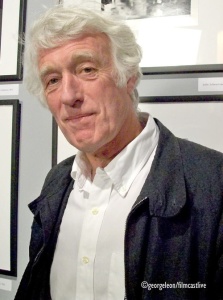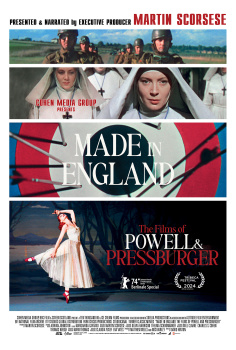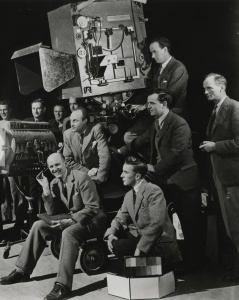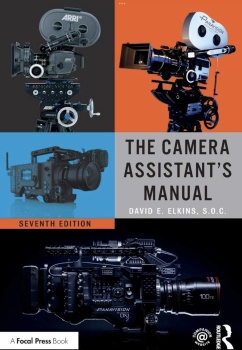For the 3D image composition Wim Wenders convinced one of the most experienced 3D pioneers in stereography, Alain Derobe, to join his team. For the unique requirements of the shoot of PINA, Derobe developed a special 3D camera rig mounted on a crane. To create the depth of the room it is very important to stay close to the dancers and to follow them: "Normally, with a dance film, we would erect cameras in front of the stage, far away from the action on stage," says Alain Derobe, "for PINA we positioned the cameras between the dancers. The camera literally dances with them. Therefore, each crew member had to deal with the choreography. Everyone had to know exactly where the dancers would move so the camera could follow them and not be in their way."
MORE ABOUT 3D. PINA BY WIM WENDERS
PINA is a feature-length dance film in 3D with the ensemble of the Tanztheater Wuppertal Pina Bausch, featuring the unique and inspiring art of the great German choreographer, who died in the summer of 2009. PINA is a film for Pina Bausch by Wim Wenders. He takes the audience on a sensual, visually stunning journey of discovery into a new dimension: straight onto the stage with the legendary Tanztheater Wuppertal Pina Bausch ensemble, he follows the dancers out of the theatre into the city and the surrounding areas of Wuppertal - the place, which for 35 years was the home and centre for Pina Bausch's creativity.
PINA was filmed in Wuppertal in three stages: in autumn of 2009, in spring and in summer of 2010. In the first stage "Café Müller", "Le Sacre du printemps" and "Vollmond" were performed live on stage at the Wuppertal Opera House, some in front of an audience, and recorded in their entire lengths. The tight global tour schedule of the Tanztheater allowed only this window for the filming. In addition to the complex 3D recording, the challenge increased significantly with the live situation, because the recordings could not be interrupted or repeated. The complexity of a 3D live recording required intensive preparation and planning.
For the 3D image composition Wim Wenders convinced one of the most experienced 3D pioneers in stereography, Alain Derobe, to join his team. For the unique requirements of the shoot of PINA, Derobe developed a special 3D camera rig mounted on a crane. To create the depth of the room it is very important to stay close to the dancers and to follow them: "Normally, with a dance film, we would erect cameras in front of the stage, far away from the action on stage," says Alain Derobe, "for PINA we positioned the cameras between the dancers. The camera literally dances with them. Therefore, each crew member had to deal with the choreography. Everyone had to know exactly where the dancers would move so the camera could follow them and not be in their way."
3D PRODUCER ERWIN M. SCHMIDT TALKS ABOUT THE PRODUCTION PROCESS.
New possibilities with digital 3D technology.
Digital technology allows complete control of the image for the entire production process of a film: from the filming, to the post-production, to the screening in theaters. Thus digital technology has been instrumental in the recent 3D boom, overcoming the difficulties of analog 3D format that plagued the previous waves in the 50's and 80's. Digital cameras run synchronized and, like digital projectors, offer an absolutely stable image; both are crucial for the perception of 3D. When we began preparing PINA, the availability of complex equipment and experienced professionals was still limited. Luckily, we met the experienced stereographer Alain Derobe, who not only familiarized us with the mirror-rigs he had developed, but also enriched us with his knowledge and enthusiasm.
Preparation of the 3-D shoot
We prepared for the filming with a series of elaborate tests. In the summer of 2009, two months before the scheduled filming, we carried out a test shoot in Wuppertal, involving the film crew and the Tanztheater´s dancers and team, employing the same equipment we would then use for the main shooting. The aim was to simulate the shooting process and to test the reliability of the technical systems. These test shots were then post-produced and screened in a cinema. We carried out smaller tests right up to the main shoot, painstakingly acquiring the complex knowledge of 3D. The Tanztheater´s tight schedule restricted the shooting schedule; we simply could not afford errors and re-shoots.
A complex 3D live system
Wim Wenders and the 3D Supervisor François Garnier developed a sophisticated system to control the telescopic crane, which was set up in the audience. For this purpose they divided the floor plan of the theater space into a virtual checkerboard and used a protractor, which corresponded exactly with the viewing angle of the camera lens. Using video recordings of previous performances, Wenders and Garnier could write a detailed schedule noting precisely where on the quadrant the camera should be positioned, at any given moment during the performance. During rehearsals and shootings, the director related these instructions via radio link to the team members.
Wim Wenders talks about PINA stereographic process at Studio Q with Jian Ghomeshi
The 3D technology used
To shoot in 3D you need two cameras mounted either side-by-side or in a so-called mirror-rig. In the latter, cameras are positioned at an angle of 90°. A one-way mirror is installed in between them, at a 45° angle to the two lines of sight. One camera films through the mirror, the other films its reflection. The various rigs used on PINA´s set were all prototypes, optimized by Alain Derobe for our shoot. The two camera systems we used were both made by Sony: large studio cameras (HDC-1500) for use on the telescopic crane, and smaller mobile units (HDC-P1) for the Steadicam.
3D limits the choice of focal length; wide-angle lenses cause distortion, while long focal lenses creates a silhouette effect. Extensive tests led us to three lenses: DigiPrimes with focal lengths of 10mm, 14mm and 20mm. Since changing the lenses in a 3D rig is time-consuming - and we had little time to spare - the focal length for each scene needed to be clearly established before shooting began.
On set we used a special 3D Transvideo monitor to calibrate the rigs and to control the 3D effect. The monitor depicts the output of both left and right cameras as superimposed anaglyph images, so that the pixel offset between the two images is visible. In addition to the experience and creativity of our stereography team, this monitor was the most important tool.
Challenges of live recording and 3D outdoor shooting
We recorded the four dance pieces live, during sold-out performances. Therefore, we could not interfere with or disturb the dancers on stage. Yet we wanted the 3D rig as close as possible to them. The use of a long, telescopic crane gave us this possibility. Of course, the dancers had some initial qualms about a giant eye dancing with them on the stage, but this soon evaporated. We could thus capture incredibly close and dynamic images, giving the viewer the sense of being onstage with the dancers.
3D loves depth - that's why the solos of the dancers outside the theatre space are a perfect complement to the dance performances on stage. These spectacular scenes were shot in striking locations throughout Wuppertal and its surrounding areas: streets, forests, mountain slopes, industrial landscapes, and of course on the Wuppertal Suspended Monorail.
Excerpt text, pics, and trailer courtesy of HanWay Films
Video interview courtesy of Studio Q.



































































